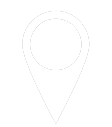When it comes to printing, one of the first things you need to decide is which paper types to use.
We know paper, let us help you!
The thickness of the paper stock is very important. If you’re not sure what stock would be best suited to your next printing project, just ask us, we’re more than happy to lend you our expertise.
Bond
This is what most stationery items are printed on ie. Letterheads, With Compliment Slips & Envelopes. Standard gsm is 80 – 100 gsm. 80 gsm is regular copy paper you will find in your office printer. Sometimes referred to Offset or Laser. Not recommend for promotional items.
Coated Paper
This is what most stationery promotional items are printed on ie. Flyers, Brochures, Postcards, Posters etc. Not recommend for regular stationery items.
This can be either gloss, satin/silk or matt. Coated paper stock has a surface sealant and often contains clay. Coating papers reduce dot gain by restricting ink from absorbing into the surface of the paper. This sealant allows for crisper printing, particularly for full colour graphics, photos, gradients and fine detailed images. Coated stocks have numerous sheen options: gloss, satin/silk, matt and finishes.
Gloss paper has a high sheen, like a typical magazine. Gloss stock has less bulk and opacity and are less expensive than a dull & matte paper of equal thickness.
Satin/Silk paper has a smooth surface paper that is low in gloss. Satin/Silk stocks falls between matt and glossy finishes.
Matt paper is a non-glossy, flat looking paper with very little sheen. Matte stocks are more opaque & contain greater bulk.
Uncoated Paper
This is what specialty stationery items are sometimes printed on: Business Cards, Letterheads, Invitations etc.
Uncoated paper stock has not been coated with clay or other surface sealants. Inks dry by absorbing into the paper, giving it a flat, dull appearance. Uncoated stocks comprise of a vast number of types and are available in a variety of surfaces, both smooth and textured (such as “laid” and “linen”).






